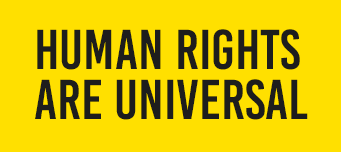Why Narrative Change is the New Frontier for Human Rights

In a world saturated with information, where attention is a precious commodity and opinions are forged in the crucible of social media, the fight for human rights has entered a new and crucial phase: the battle for narrative. No longer is it enough to simply state facts or cite laws; to truly advance human rights, we must fundamentally alter the stories people tell themselves and each other.
The challenge is formidable. As highlighted by recent discussions, "We are in a world where narrative change is the key to human rights freedom, changing the narrative." The problem, however, is that "anti-rights movements have a lot of space, a lot of platforms to spread their message." This unhindered propagation of harmful narratives isn't just about state-sanctioned oppression; as powerfully stated, "the harm doesn't only come from the states. It also comes from the communities."
Consider the insidious narratives that often undermine human rights: the idea that advocating for one group's rights inherently diminishes another's (e.g., "if I say I'm fighting for women's rights, it's taking rights away from men"), or the dehumanizing portrayals of marginalized communities that strip them of their dignity and universal humanity. These are not merely misunderstandings; they are deeply ingrained stories that shape perceptions, justify discrimination, and ultimately impede progress.
The traditional approach to human rights advocacy, often rooted in legal frameworks and reporting, struggles to penetrate these entrenched narratives. You can present irrefutable evidence of a violation, but if the underlying narrative dehumanizes the victim or demonizes their cause, the facts may simply bounce off. This is where the power of storytelling and art becomes indispensable.
How do you reach communities when their beliefs are fortified by years of misinformation or prejudice? "Through things that communities can relate to, through things that lead the community to understand differently, to have each experience something of their own." This isn't about lecturing; it's about invitation. It's about crafting stories that resonate on a personal, emotional level, allowing individuals to step into another's shoes and truly feel their experience.
The anti-rights movements understand this implicitly. They don't just present arguments; they weave compelling, often fear-mongering, narratives that tap into existing anxieties and biases. They create vivid, if distorted, pictures that are easy to digest and share. To counter this, human rights advocates must become master storytellers, not just fact-checkers.
The universal nature of human rights—the understanding that "you cannot say we have reached human rights utopia in a place where there are groups that do not have "it"—can only be truly embraced when individuals connect with the inherent dignity of all people. This connection isn't forged through abstract principles alone; it's built through shared stories, through moments of recognition, and through art that "ignites all those senses" and makes you "really be in that moment." The narrative is the map; changing it is the journey to freedom.





